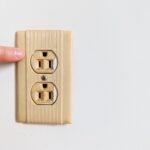Electric range burners are the heart of any commercial kitchen, keeping pace with the fast-paced demands of food service. When they falter, it’s not just an inconvenience – it’s a blow to efficiency and profitability. Delving into the core of these common problems and understanding how to tackle them can dramatically enhance operational flow in a bustling kitchen.
- Gain clarity on the most frequent electric range burner issues that interrupt service needs.
- Learn the step-by-step diagnostic process to pinpoint specific burner problems safely and effectively.
- Discover how to replace defective components, ensuring your equipment runs smoothly and reduces downtime.
By engaging with this guide, you’ll arm yourself with essential knowledge to maintain your electric range’s peak performance, fostering a seamless kitchen experience that translates into satisfied customers and superior service delivery.
Identifying Common Electric Range Burner Problems
Electric range burners are essential components in commercial kitchens, ensuring efficient cooking processes. Understanding typical problems, such as inconsistent heating or non-functioning burners, is crucial for maintaining operational efficiency in your food service business.
One common issue is inconsistent heating, where the burner doesn’t heat uniformly. This might be caused by faulty coil burners or issues with the temperature sensor. Inconsistent heat can lead to unevenly cooked food, which can affect the quality of your culinary creations.
Another frequently encountered problem is a non-functioning burner, where the burner fails to heat up at all. This could be due to electrical connection issues, such as a damaged socket or a worn-out infinite switch that controls the burner’s temperature. Addressing these issues promptly is essential for minimizing downtime in your kitchen operations.
Recognizing these common electric range burner problems early can save time and prevent larger issues from disrupting your food service operations. Proactive troubleshooting and maintenance can greatly enhance the lifespan and performance of your kitchen equipment.
Step-by-Step Testing: Diagnosing Your Burner Issues
Diagnosing electric range burner issues begins with a systematic testing process. Ensuring accuracy in this step is vital to identifying and resolving problems effectively. Before starting, ensure the power to your electric range is turned off to maintain safety throughout the process.
First, visually inspect the burner coils for any visible signs of damage, such as burns or breaks. Damaged coils can cause inconsistencies in heating. Removing the burner coil and checking the terminal connections for debris or corrosion is also recommended.
Next, use a multimeter to test the burner’s electrical continuity. Set the multimeter to the ohm setting and attach its leads to the burner’s terminals. A functional burner should display a reading between 10 to 40 ohms. If the reading is outside this range, the burner may need replacement.
Also, consider evaluating the temperature control switch, especially if the burner operates intermittently. Inspect the switch for physical damage or burnt connections. If necessary, test the switch with a multimeter to assess whether it’s functioning correctly.
By following these steps, you can accurately diagnose electric range burner issues. Proper testing not only identifies the source of the problem but also guides efficient repairs, ensuring your kitchen equipment is restored to optimal working condition swiftly.
Replacing Faulty Components: Your Guide to Electric Range Burner Problems and Solutions
When it comes to electric range burners, effective maintenance is crucial for optimal performance in any commercial kitchen. If you encounter issues such as inconsistent heating or a burner that simply doesn’t work, replacing faulty components might be necessary. Understanding the process of replacing these parts can save both time and resources, ensuring your kitchen equipment operates efficiently.
Before beginning any repair, ensure the power supply is disconnected to avoid any electrical hazards. Safety should always be your top priority. Once confirmed, identify the problem area. For instance, if a burner doesn’t heat up correctly, it could be an issue with the heating element. In electric ranges, these elements are easily accessible and can be typically removed by unscrewing the terminal screws that hold the wires in place.
After removing the faulty heating element, inspect the condition of the connectors and wires. Over time, these can become loose or damaged, contributing to inefficient performance. Replace any damaged wires by cutting them off or rewiring connections properly. Ensure that you are using the right type of wire for your electric range model to avoid further issues.
When inserting a new heating element, align it with the burner socket and fasten the terminal screws securely. This step is crucial to prevent wobbling or improper connection, which could cause uneven heating. Tested the burner by turning the power back on to ensure that it heats evenly.
If the problem persists, it might be time to consider replacing the infinite switch, which controls the level of heat supplied to the burner. This component regulates heat by controlling electrical energy flow to the burner. Detailed guides and schematic diagrams often accompany switches, facilitating a smoother installation process.
Troubleshooting and replacing components can appear daunting at first, but with proper guidance, it becomes manageable. Investing in quality replacement parts ensures long-term reliability and better performance of your electric range.
By maintaining keen attention to detail and following proper replacement techniques, you can keep your culinary operations efficient and minimize downtime.
Frequently Asked Questions About Electric Range Burner Problems
What are the signs of a faulty electric range burner?
Signs include inconsistent heating, burners not turning on, or unusual noises when operating.
How can I test if my electric range burner is working?
You can test by using a multimeter to check for continuity. Ensure the range is turned off before performing this test.
What tools do I need to replace an electric range burner?
Basic tools like a screwdriver set and a multimeter are usually needed for replacement.
Can I replace an electric range burner myself?
Yes, with the right tools and safety precautions, you can replace it yourself. However, consult the manufacturer’s instructions.
Is it normal for electric burners to make noise?
Some noise is normal, but frequent or loud noises can indicate a problem requiring inspection.





